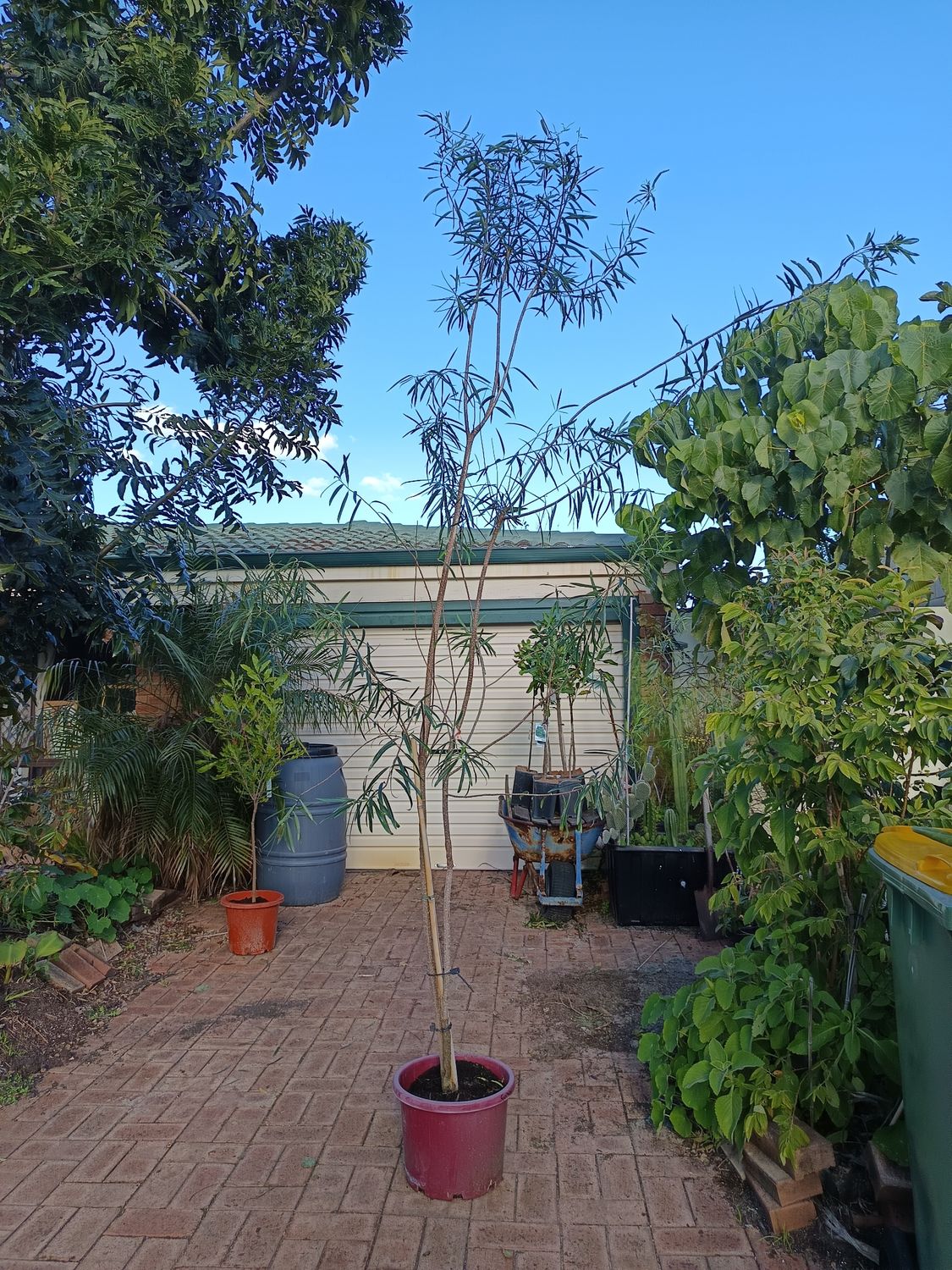Gumby Gumby
Restocking Sunday 3rd aug
Pittosporum angustifolium – Gumby Gumby, Native Apricot
Gumby Gumby is a hardy Australian native tree known for its feathery foliage, drought resistance, and ornamental appeal. It produces small yellow-orange fruits that resemble tiny apricots and attracts native birds and pollinators. Its slender, upright growth makes it suitable for hedging, windbreaks, or as a feature tree in dry landscapes. Once established, it is highly tolerant of heat, poor soils, and minimal water.
Features
Ideal prune height: 2–4 m
pH range: 6.0–8.0
Sun preference: Full sun or light shade
Minimum pot size year 5: 35 L
Time to fruit: 3–5 years, the one pictured is flowering now!
Harvest period: Late summer to early autumn
Notable traits: Drought-tolerant, windbreak species, bird-attracting
Gumby Gumby thrives in sandy or gravelly soils and needs very little maintenance. Water deeply when young to establish strong roots, then reduce watering as the tree matures. It is highly suited to Perth’s dry conditions, surviving with little to no fertiliser, but benefits from a light mulch and occasional compost feed.
This is a tough native tree that not only looks elegant but also supports local wildlife and withstands harsh summers. Perfect for low-maintenance, waterwise gardens.
Gumby Gumby (Pittosporum angustifolium) has a long history of traditional use by First Nations people as a bush medicine and spiritual healing plant. It’s considered a “yes plant” by many—meaning one that is safe, revered, and used widely across different language groups with no known toxic forms when used correctly.
Traditional and Bush Uses
Leaves and bark were used to make infusions or teas, believed to support overall well-being, boost immunity, and assist with internal complaints.
Smoke from burning leaves was sometimes used in cleansing rituals.
Fruits and seeds were occasionally chewed or used in poultices, but less commonly.
It’s also been used to soothe skin conditions, minor wounds, and headaches.
Gumby Gumby is especially valued among Central and Western Desert communities, where it’s seen as a multipurpose survival plant in arid zones.
Modern Interest and Medicinal Use
Interest in Gumby Gumby has grown in recent decades due to anecdotal reports of its use in:
Supporting immune function
Acting as an anti-inflammatory
Providing antioxidant effects
Some people brew tea from dried leaves, while others use powdered leaf capsules or tinctures.
Important Note
While used traditionally and increasingly in folk remedies, scientific studies on its medicinal effects are limited. It should not replace professional medical treatment. That said, no known toxic effects have been recorded for Pittosporum angustifolium when used traditionally.
It’s a strong ‘yes’ plant in the cultural and bush medicine world, deeply respected for its resilience, healing association, and long-standing relationship with Australia’s original peoples.
gumby gumby tree, Pittosporum angustifolium, drought-tolerant native, edible bush fruits, Perth native trees, low-maintenance landscaping, Australian bush tucker
